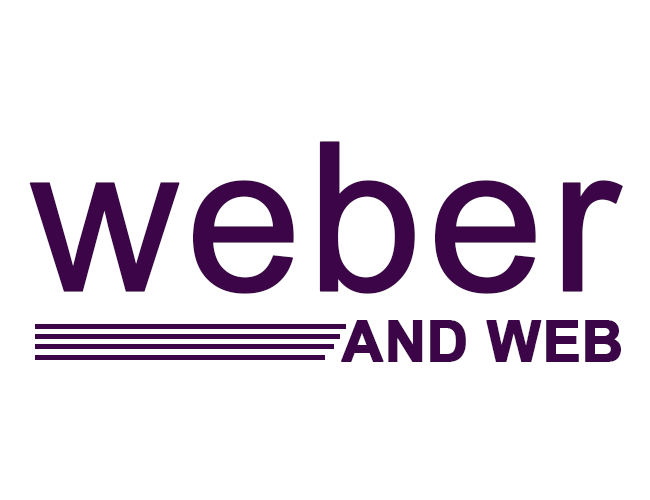Market indices serve as vital barometers of economic health, encapsulating the performance of key sectors and stocks. With tools like HDFC SKY, investors can easily navigate these trends, leveraging advanced features to make informed decisions while enjoying cost-effective trading solutions.
Understanding Market Indices: A Definition
Market indices are essential tools for investors and analysts, serving as benchmarks to gauge the performance of financial markets. A market index aggregates the performance of a specific group of stocks, representing a particular sector or the entire market. For instance, indices like the S&P 500 or the Nifty 50 track the performance of the largest companies within their respective regions, providing insight into overall market trends. These indices are calculated based on various methodologies, such as price-weighted, market capitalization-weighted, or equal-weighted, and they offer a snapshot of market sentiment, economic health, and investor confidence. Understanding market indices is crucial for making informed investment decisions, as they help investors identify trends, compare the performance of individual stocks against the broader market, and create diversified investment portfolios.
With the advent of platforms like HDFC SKY, understanding and investing in market indices has become more accessible. HDFC SKY is an all-in-one investment platform that not only provides the ability to trade stocks and mutual funds but also offers features that enhance the trading experience, such as option-chain analysis and margin trading. Investors can seamlessly navigate through the complexities of market indices while benefiting from zero account-opening charges and a flat ₹20 brokerage per trade. This comprehensive approach allows users to analyze market trends and make strategic investment choices with greater ease. By leveraging advanced tools and insights offered by platforms like HDFC SKY, investors can better understand market indices, thereby optimizing their trading strategies and aligning their portfolios with market movements.
Stock Market understanding is critical for investors aiming to harness the full potential of their portfolios. With platforms like HDFC SKY elevating the trading experience, investors now have unprecedented access to tools that simplify decision-making. Such platforms offer users real-time data, personalized alerts, and in-depth market analysis, empowering them to make informed investment decisions. Additionally, the integration of educational resources helps demystify the intricacies of market dynamics, transforming even novice investors into well-equipped traders. The seamless user experience ensures that investors can remain agile and responsive to market changes, thereby maximizing their investment potential.
The Role of Major Indices in Financial Markets
Major indices play a crucial role in financial markets by serving as benchmarks for evaluating the overall performance of an economy or a specific sector. Indices such as the S&P 500, Dow Jones Industrial Average, and Nifty 50 in India aggregate the performance of selected stocks, providing investors with a snapshot of market trends and investor sentiment. These indices help investors gauge market health, and they often influence trading strategies and decisions. For instance, a rising index may indicate investor confidence and economic growth, prompting traders to invest more aggressively, while a declining index might signal caution and lead to increased selling. By tracking the movements of these indices, investors can make informed decisions about asset allocation and risk management.
Platforms like HDFC SKY enhance the accessibility and utility of major indices for individual investors. By offering an all-in-one investment solution, HDFC SKY enables users to easily track index performance alongside a diverse range of investment products such as stocks, mutual funds, and commodities. With features like option-chain analysis and flat ₹20 brokerage per trade, investors can efficiently execute trades based on index movements. The absence of account-opening charges further lowers the barrier to entry, encouraging more investors to participate in the market. This integration of advanced tools with the ability to monitor major indices allows users to make data-driven investment decisions, ultimately leading to more informed portfolio management and an enhanced understanding of market dynamics.
Types of Market Indices: A Comparative Overview
Market indices serve as benchmarks to gauge the performance of various sectors within the financial markets. Among the most recognized types are price-weighted indices, such as the Dow Jones Industrial Average (DJIA), which allocate greater influence to stocks with higher prices, potentially skewing performance representation. Alternatively, market capitalization-weighted indices, like the S&P 500, consider the total market value of a company, ensuring that larger firms have a proportionate impact on the index’s movements. Equal-weighted indices take a different approach by assigning equal weight to each constituent, providing a clearer picture of broader market trends without the bias of individual stock prices or sizes.
Stocks to buy today can be influenced by the types of indices that investors follow, as these indices often shape market perceptions and investment strategies. Sector-specific indices focus on individual industries, allowing investors to track and invest in particular market segments such as technology or healthcare. Conversely, international indices aggregate performance across global markets, offering insights into regional economic trends and opportunities. Understanding the nuances of these indices can empower investors to make more informed decisions, aligning their portfolios with broader market dynamics and the potential for future growth.
Another category includes sector-specific indices, which focus on particular industries, enabling investors to assess performance trends within those sectors. For instance, the NASDAQ-100 Index represents the largest non-financial companies on the NASDAQ exchange, while the Nifty Bank Index tracks major banking stocks in India. These indices are instrumental for investment strategies, particularly for platforms like HDFC SKY, which allow users to diversify their portfolios across various asset classes, including stocks and mutual funds, with competitive pricing and advanced analytical tools. Such platforms empower investors to leverage the insights offered by these indices for informed decision-making.
How Indices Are Calculated: Methods and Formulas
Indices are calculated using various methods, with the most common being the price-weighted, market capitalization-weighted, and equal-weighted approaches. In a price-weighted index, such as the Dow Jones Industrial Average, each stock’s weight is determined by its share price; thus, higher-priced stocks have a greater influence on the index’s movements. In contrast, market capitalization-weighted indices, like the S&P 500, assign weights based on the total market value of each company, ensuring that larger companies have a more significant impact on the index’s performance. The formula for calculating a market capitalization-weighted index is to sum the market capitalizations of all constituent companies and then divide by a divisor that is adjusted for stock splits, dividends, or other corporate actions to maintain continuity over time.
HDFC SKY, as an all-in-one investment platform, offers users access to various financial instruments, including stocks, mutual funds, and commodities. While it does not directly calculate indices, understanding the underlying methods of index calculation can enhance users’ investment strategies on the platform. For instance, users analyzing stock performance through HDFC SKY might consider how the weightings of individual stocks in an index affect overall market trends. Additionally, advanced tools like option-chain analysis can help users assess the potential price movements of stocks, integrating this knowledge with index performance for a more informed trading approach. With zero account-opening charges and a flat brokerage fee, HDFC SKY empowers investors to explore these complexities without incurring high costs.
Oracle share price analysis on HDFC SKY can provide investors with valuable insights into technology stock trends, enabling them to craft more strategic portfolios. By examining sector-specific movements and aligning their strategies with broader market shifts, investors can better anticipate market fluctuations. Understanding how the Oracle share price interacts with other tech stocks on HDFC SKY not only aids in identifying growth opportunities but also enhances risk management. Furthermore, users leveraging HDFC SKY’s comprehensive investment tools can optimize their portfolios by considering global economic influences on tech stocks and indices.
Correlation Between Market Indices and Economic Indicators
The correlation between market indices and economic indicators is a critical area of study for investors and economists alike. Market indices, such as the Nifty 50 or the S&P 500, serve as barometers for the overall performance of the stock market, reflecting investor sentiment and expectations about future economic conditions. Economic indicators, including Gross Domestic Product (GDP), unemployment rates, inflation, and consumer spending, provide quantitative measures of a country’s economic health. For instance, a rising GDP typically signals robust economic growth, which can lead to higher corporate earnings, thereby uplifting market indices. Conversely, high inflation rates might prompt central banks to increase interest rates, negatively impacting market performance as borrowing costs rise and consumer spending potentially declines. Understanding these correlations helps investors make informed decisions, aligning their investment strategies with macroeconomic trends.
Platforms like HDFC SKY facilitate this analysis by offering advanced tools that allow investors to track both market indices and relevant economic indicators seamlessly. With features such as option-chain analysis and access to various investment products, HDFC SKY empowers users to identify patterns and correlations that can influence their trading decisions. For example, if an investor notices a consistent rise in the Nifty 50 coinciding with positive employment data, they might consider increasing their equity exposure in anticipation of continued growth. The platform’s zero account-opening charges and flat ₹20 brokerage per trade further enhance its appeal, making it accessible for both novice and seasoned investors. By leveraging the insights gained from economic indicators alongside market trends, users can optimize their investment strategies and potentially achieve better returns.
The Impact of Market Indices on Investment Strategies
Market indices play a pivotal role in shaping investment strategies, serving as benchmarks for performance evaluation and risk assessment. Investors often use indices like the Nifty 50 or the Sensex to gauge market sentiment and economic health. For instance, a rising index may signal bullish market conditions, prompting investors to adopt aggressive strategies focused on growth stocks. Conversely, a declining index might lead investors to shift towards defensive strategies, emphasizing stable, dividend-paying stocks or diversified assets. The HDFC SKY platform, with its comprehensive suite of investment options—including stocks, mutual funds, and commodities—enables users to align their strategies with market trends effectively. By leveraging tools such as option-chain analysis, investors can make informed decisions based on real-time market data, enhancing their ability to react to fluctuations in the indices.
Moreover, the impact of market indices on investment strategies extends to asset allocation and risk management. Investors often adjust their portfolios based on index movements, rebalancing their holdings to maintain a desired risk profile. For instance, during periods of high volatility indicated by significant index fluctuations, investors might increase their exposure to low-risk assets available on platforms like HDFC SKY to safeguard their investments. Additionally, the flat ₹20 brokerage fee per trade allows for more frequent adjustments without incurring significant costs, making it easier for investors to respond to changing market conditions. HDFC SKY’s advanced tools and features provide a seamless experience for executing these strategic shifts, empowering users to optimize their portfolios and capitalize on emerging market opportunities. This adaptability is essential in a dynamic market environment, allowing investors to navigate through various economic cycles effectively.
Stock Market App capabilities have become increasingly important in today’s fast-paced trading environment. With real-time data and in-depth analytical tools, investors can swiftly assess market trends and execute informed strategies. The app provides unparalleled access to comprehensive market insights, enabling users to meticulously track performance metrics and make data-driven decisions. By leveraging the intuitive interface, investors can effortlessly align their investment objectives with market conditions, ensuring optimal asset distribution at all times. As a result, the Stock Market App is an indispensable tool for investors aiming to refine their risk management and enhance returns amidst changing market variables.
Limitations of Market Indices in Reflecting Market Trends
Market indices, while useful for gauging overall market performance, have inherent limitations that can distort their reflection of broader market trends. One major limitation is their reliance on a weighted average of select stocks, which can skew the index’s performance based on the fluctuations of a few large-cap companies. For example, if a handful of tech giants experience significant price changes, the index may exhibit volatility that does not accurately represent the performance of smaller companies or the market as a whole. Additionally, many indices are price-weighted, meaning that stocks with higher prices carry more influence, potentially leading to misleading conclusions about market health. This lack of comprehensive representation can make it difficult for investors to assess the true state of the market without delving deeper into sector-specific or cap-weighted analyses.
Furthermore, market indices often fail to account for critical factors such as market breadth and sector performance, which can provide more nuanced insights into underlying trends. For instance, a rising index might suggest bullish market sentiment; however, if this rise is driven by a narrow set of industries while others lag, it may indicate a fragile or unbalanced market recovery. This is particularly relevant for retail investors using platforms like HDFC SKY, which offers a diverse range of investment options. Without considering the limitations of indices, investors may overlook opportunities in sectors not represented in major indices or misinterpret market signals, leading to investment decisions that do not align with broader economic conditions. Consequently, reliance solely on indices can hinder effective strategic planning and risk management in investment portfolios.
Historical Trends: How Indices Have Changed Over Time
Historical trends in financial indices reveal significant shifts in market dynamics and investor behavior over time. For instance, major indices like the S&P 500 and the Nifty 50 in India have demonstrated a consistent upward trajectory since their inception, reflecting broader economic growth and increasing corporate profitability. Over the last two decades, these indices have also shown heightened volatility, often influenced by global events such as the 2008 financial crisis and the COVID-19 pandemic. The increasing participation of retail investors, facilitated by technological advancements and platforms like HDFC SKY, has further transformed the landscape. This trend underscores a growing democratization of investing, where more individuals can access diverse financial instruments, contributing to the indices’ fluctuations and overall performance.
The evolution of indices is also tied to the changing composition of their constituents, which often mirrors shifts in economic focus and innovation. For example, the rise of technology and digital finance has led to a greater representation of tech companies within key indices, significantly impacting their performance metrics. HDFC SKY exemplifies this trend by providing users with seamless access to a wide range of investment options, including stocks and mutual funds that focus on emerging sectors. This accessibility has enhanced market participation and encouraged investors to diversify their portfolios, thereby influencing how indices evolve. As the financial landscape continues to adapt to new trends and technologies, indices will likely reflect these changes, offering insights into the broader economic environment and investor sentiment.
Case Studies: Significant Market Events and Index Reactions
Case studies of significant market events often reveal the intricate ways in which investor sentiment and market indices interact. For instance, during the market volatility caused by the COVID-19 pandemic, many investors flocked to platforms like HDFC SKY to capitalize on the rapid fluctuations in stock prices. The platform’s all-in-one approach, offering stocks, mutual funds, and commodities, allowed users to diversify their portfolios quickly in response to market conditions. As indices like the Nifty 50 saw sharp declines followed by recoveries, HDFC SKY’s zero account-opening charges and flat ₹20 brokerage fee became attractive features for both novice and seasoned investors looking to optimize their trading strategies without incurring hefty costs. This case underscores the importance of accessible investment platforms during periods of market uncertainty.
Another notable market event was the introduction of the Goods and Services Tax (GST) in India, which significantly impacted various sectors. Following the GST rollout, market indices initially reacted negatively due to uncertainties regarding the tax structure’s implications for businesses. However, platforms like HDFC SKY provided users with advanced analytical tools, such as option-chain analysis, which facilitated informed decision-making amidst the chaos. Investors who utilized these tools were better equipped to assess the long-term effects of GST on their investments, leading to a quicker recovery in indices like the Sensex. The ability to execute trades in real-time, coupled with margin trading options, allowed HDFC SKY users to leverage opportunities as market sentiments shifted, exemplifying how comprehensive investment platforms can enhance investor responsiveness during significant market disruptions.
Future Trends: The Evolution of Market Indices in a Digital Age
As we move deeper into the digital age, the evolution of market indices is poised to undergo significant transformations driven by technology and investor preferences. Traditional indices, which primarily track large-cap stocks or specific sectors, are increasingly being supplemented by more dynamic and responsive indices that reflect real-time market conditions and investor sentiment. Innovations like algorithmic trading and artificial intelligence are enabling the creation of indices that can adapt to market fluctuations instantaneously, providing more accurate representations of asset performance. Additionally, platforms like HDFC SKY are leading the charge in democratizing access to these evolving indices, allowing retail investors to leverage advanced analytical tools and real-time data for informed decision-making. This shift not only enhances transparency but also fosters a more inclusive investment environment, where individuals can engage with sophisticated financial instruments previously reserved for institutional investors.
Furthermore, the rise of thematic and ESG (Environmental, Social, Governance) indices signifies a growing trend toward socially responsible investing. As millennials and Gen Z investors become more prominent in the market, there is an increasing demand for investment vehicles that align with their values, creating opportunities for new indices focused on sustainability and ethical considerations. HDFC SKY, with its comprehensive investment offerings, exemplifies how digital platforms can integrate these emerging trends, providing users with access to a variety of investment products that are in line with their personal values and risk appetites. By incorporating features such as zero account-opening charges and flat brokerage fees, HDFC SKY is not only making it easier for investors to diversify their portfolios but also facilitating the exploration of innovative indices that reflect the evolving landscape of global investing. This adaptability will be crucial as market dynamics continue to shift in response to technological advancements and changing consumer behaviors.




:max_bytes(150000):strip_icc():format(webp)/porch-patio-2312701_three0254br-1-ce170869a41a4621a3f696e3c8d72f66.jpg)